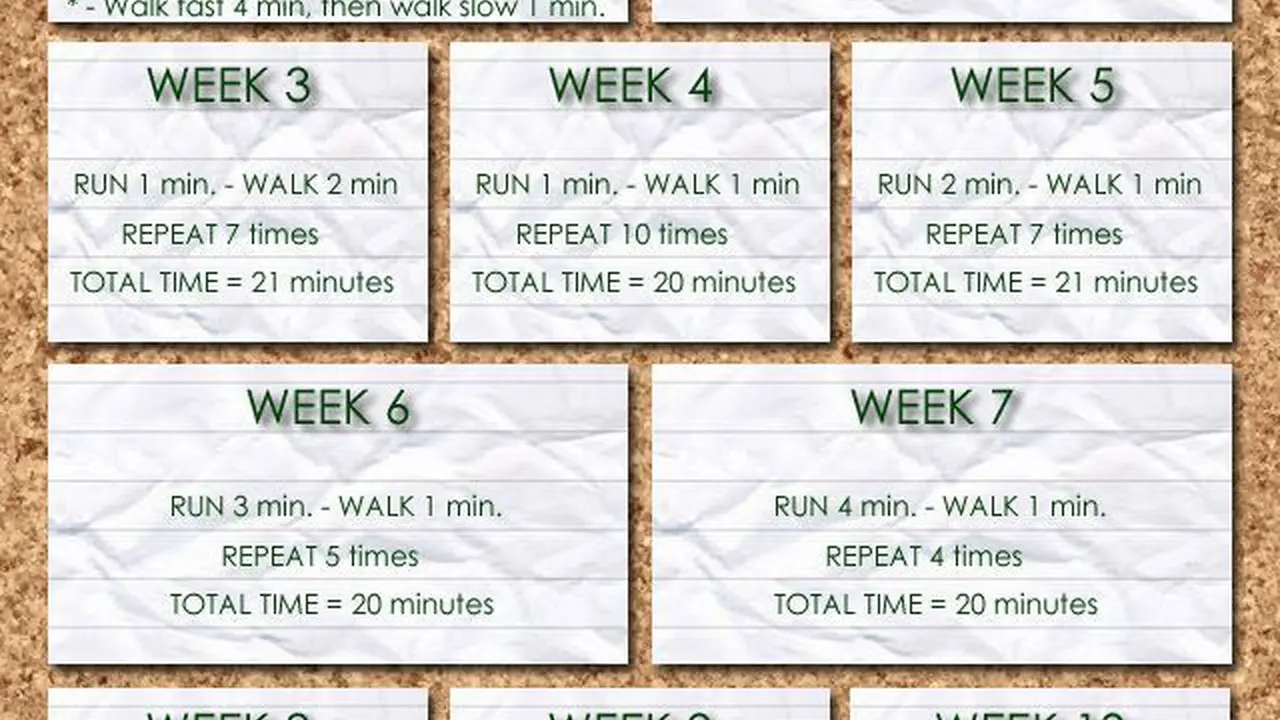Running for Beginners: A Guide to Getting Started
Learn how to start running safely and effectively with this beginner's guide. This guide covers essential tips on form, pacing, and gear. Enjoy the benefits of running and achieve your fitness goals with proper guidance.

Why Start Running The Cardiovascular and Mental Benefits
So, you're thinking about taking up running? Awesome! It's one of the most accessible and rewarding forms of exercise. You don't need fancy equipment or a gym membership. Just lace up your shoes and hit the road (or trail!). Running is fantastic for your cardiovascular health. It strengthens your heart, lowers blood pressure, and improves circulation. But it's not just about physical health. Running is a major mood booster! It releases endorphins, those feel-good chemicals in your brain, which can help reduce stress, anxiety, and even symptoms of depression. Plus, it's a great way to clear your head and enjoy some time to yourself.
Essential Running Gear Shoes Apparel and Gadgets
Before you start pounding the pavement, let's talk gear. You don't need a ton of stuff, but a few key items will make your running experience much more enjoyable and safer.
Running Shoes The Most Important Investment
Your shoes are the most important piece of equipment. Don't skimp on them! A good pair of running shoes will provide cushioning, support, and help prevent injuries. Head to a specialty running store where they can analyze your gait (how your foot strikes the ground) and recommend the best shoes for your foot type. Here are a few popular and well-regarded options:
- Brooks Ghost 14: A neutral shoe perfect for everyday running. Offers a smooth and comfortable ride. Generally priced around $130.
- Saucony Kinvara 13: A lightweight and responsive shoe great for faster runs and tempo workouts. Often found for around $120.
- Hoka Clifton 8: Known for its maximum cushioning, ideal for runners who want a plush and comfortable feel. Typically costs around $140.
- New Balance Fresh Foam 880v12: A versatile shoe suitable for various types of runs and distances. A good all-around option, typically costing around $135.
Comparing Running Shoes: The Brooks Ghost 14 is a solid choice for beginners due to its reliability and comfort. The Saucony Kinvara 13 shines for those wanting a lighter, faster feel as they progress. The Hoka Clifton 8 is best for runners who prioritize maximum cushioning and joint protection. The New Balance 880v12 provides a balanced experience, suitable for various run types. Always try shoes on and ideally run a few steps in them at the store to ensure a good fit!
Running Apparel What to Wear for Comfort
Comfortable clothing is key. Avoid cotton, which absorbs sweat and can make you feel cold and clammy. Opt for moisture-wicking fabrics like polyester or merino wool. Here's a basic apparel checklist:
- Running Shorts or Leggings: Choose a style that allows for freedom of movement. Look for shorts with built-in liners to prevent chafing. Leggings are great for colder weather.
- Running Shirt: Moisture-wicking is essential. Consider short-sleeved shirts for warmer weather and long-sleeved shirts for cooler weather.
- Socks: Running-specific socks are designed to prevent blisters. Look for seamless socks made from moisture-wicking materials. Balega and Feetures are popular brands.
- Jacket (Optional): A lightweight, water-resistant jacket is a good idea for running in unpredictable weather.
Running Gadgets GPS Watches and More
While not essential, gadgets can enhance your running experience. Here are a few popular options:
- GPS Watch: Tracks your distance, pace, time, and heart rate. Garmin, Polar, and Suunto are leading brands. The Garmin Forerunner series is a popular choice for runners of all levels. Prices range from $200 to $800 depending on features.
- Heart Rate Monitor: Provides more accurate heart rate data than a wrist-based monitor. Chest straps are generally considered more accurate. Polar H10 is a popular chest strap option (around $90).
- Running Headphones: Listen to music or podcasts while you run. Bone conduction headphones (like Aftershokz) are a good option because they allow you to hear your surroundings. Prices vary, but expect to pay around $100-$150 for a decent pair.
- Phone Armband: Securely holds your phone while you run.
Proper Running Form Preventing Injuries
Good running form is crucial for preventing injuries and maximizing efficiency. Here are a few key things to keep in mind:
- Posture: Stand tall with a slight lean forward from your ankles. Avoid slouching.
- Foot Strike: Aim to land midfoot. Avoid overstriding (landing with your heel far in front of your body).
- Cadence: Your cadence is the number of steps you take per minute. A cadence of around 170-180 steps per minute is often recommended.
- Arm Swing: Keep your arms bent at a 90-degree angle and swing them forward and back, not across your body.
- Relaxation: Stay relaxed. Avoid tensing your shoulders or clenching your fists.
Beginner Running Plan Starting Slowly and Gradually Increasing Mileage
Don't try to do too much too soon! Start with a walk-run program and gradually increase your running time and distance. Here's a sample 8-week plan:
Week 1-2: Walk for 5 minutes, run for 1 minute. Repeat 5-8 times. Do this 3 times per week.
Week 3-4: Walk for 5 minutes, run for 2 minutes. Repeat 5-8 times. Do this 3 times per week.
Week 5-6: Walk for 3 minutes, run for 5 minutes. Repeat 4-5 times. Do this 3 times per week.
Week 7-8: Run for 10 minutes, walk for 2 minutes. Repeat 3-4 times. Do this 3 times per week.
Listen to your body! If you feel pain, stop and rest. It's better to take a day off than to push through an injury.
Warming Up and Cooling Down Preparing Your Body and Aiding Recovery
Always warm up before each run and cool down afterwards. A warm-up prepares your muscles for exercise, while a cool-down helps your body recover.
Warm-up: 5-10 minutes of light cardio, such as walking or jogging, followed by dynamic stretches like leg swings, arm circles, and torso twists.
Cool-down: 5-10 minutes of walking followed by static stretches, holding each stretch for 20-30 seconds. Focus on stretching your quads, hamstrings, calves, and hip flexors.
Nutrition and Hydration Fueling Your Runs
Proper nutrition and hydration are essential for runners. Eat a balanced diet with plenty of carbohydrates, protein, and healthy fats. Carbohydrates are your primary source of energy, while protein helps repair and rebuild muscle tissue. Healthy fats are important for hormone production and overall health.
Hydration: Drink plenty of water throughout the day, especially before, during, and after your runs. Consider carrying a water bottle with you on longer runs.
Listening to Your Body Recognizing Pain and Preventing Injuries
Pay attention to your body! Don't ignore pain. If you experience pain that doesn't go away after a few days of rest, see a doctor or physical therapist. Common running injuries include:
- Runner's Knee: Pain around the kneecap.
- Shin Splints: Pain along the shinbone.
- Plantar Fasciitis: Pain in the heel and arch of the foot.
- Achilles Tendinitis: Pain in the Achilles tendon.
Prevention is key! Good running form, proper footwear, and gradual increases in mileage can help prevent many running injuries.
Finding Running Routes Exploring Your Neighborhood and Beyond
One of the best things about running is that you can do it almost anywhere! Explore your neighborhood, local parks, or trails. Use online resources like Strava or MapMyRun to find running routes in your area. Consider joining a local running club to meet other runners and discover new routes.
Staying Motivated Setting Goals and Tracking Progress
It's easy to lose motivation, especially in the beginning. Here are a few tips for staying motivated:
- Set Realistic Goals: Start with small, achievable goals and gradually increase the challenge.
- Track Your Progress: Use a running app or journal to track your distance, pace, and time.
- Find a Running Buddy: Running with a friend can make it more enjoyable and help you stay accountable.
- Reward Yourself: Treat yourself to something special after reaching a goal.
- Remember Why You Started: Keep your goals in mind and remind yourself why you wanted to start running in the first place.
Running Safely Awareness of Surroundings and Visibility
Safety is paramount. Always be aware of your surroundings. If running at night or in low-light conditions, wear reflective clothing and carry a light. Run against traffic so you can see oncoming cars. Let someone know where you're going and when you expect to be back. And, of course, be mindful of weather conditions. Avoid running in extreme heat or cold.
:max_bytes(150000):strip_icc()/277019-baked-pork-chops-with-cream-of-mushroom-soup-DDMFS-beauty-4x3-BG-7505-5762b731cf30447d9cbbbbbf387beafa.jpg)





